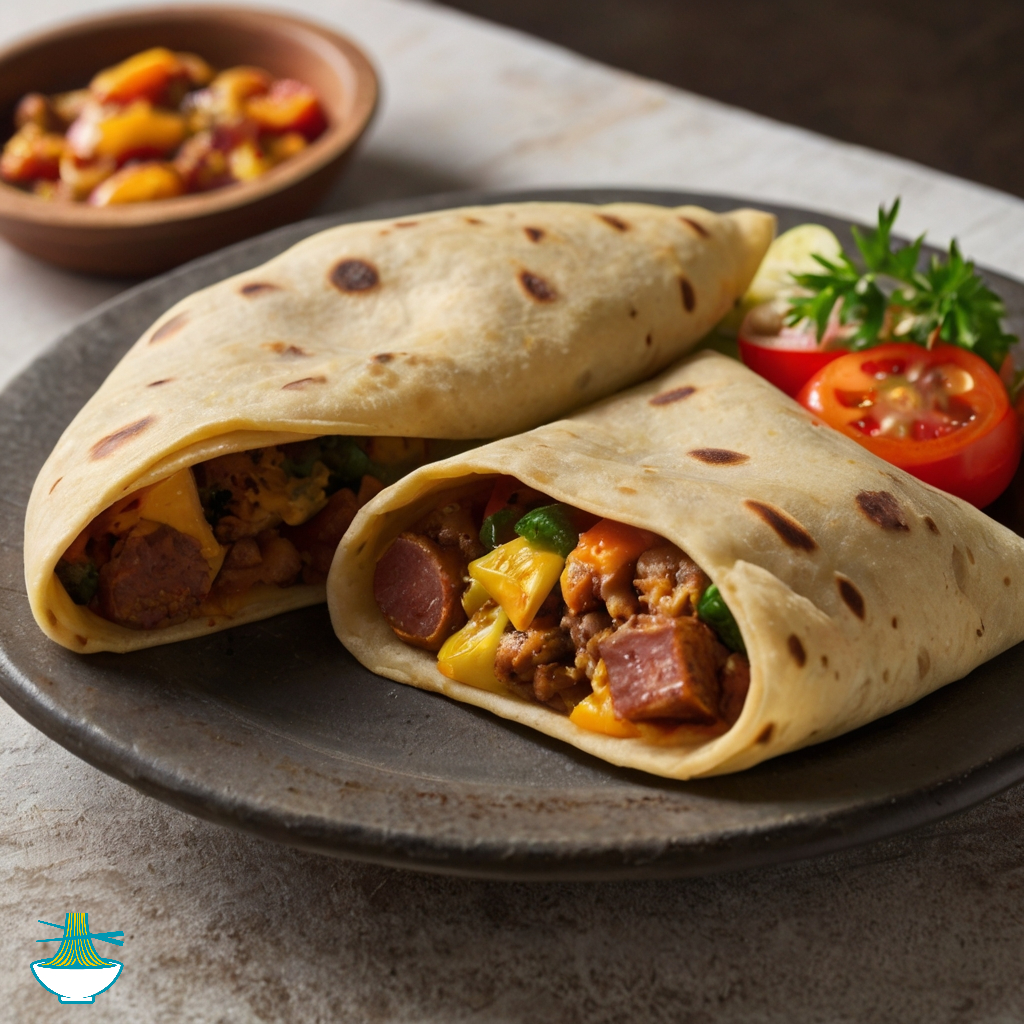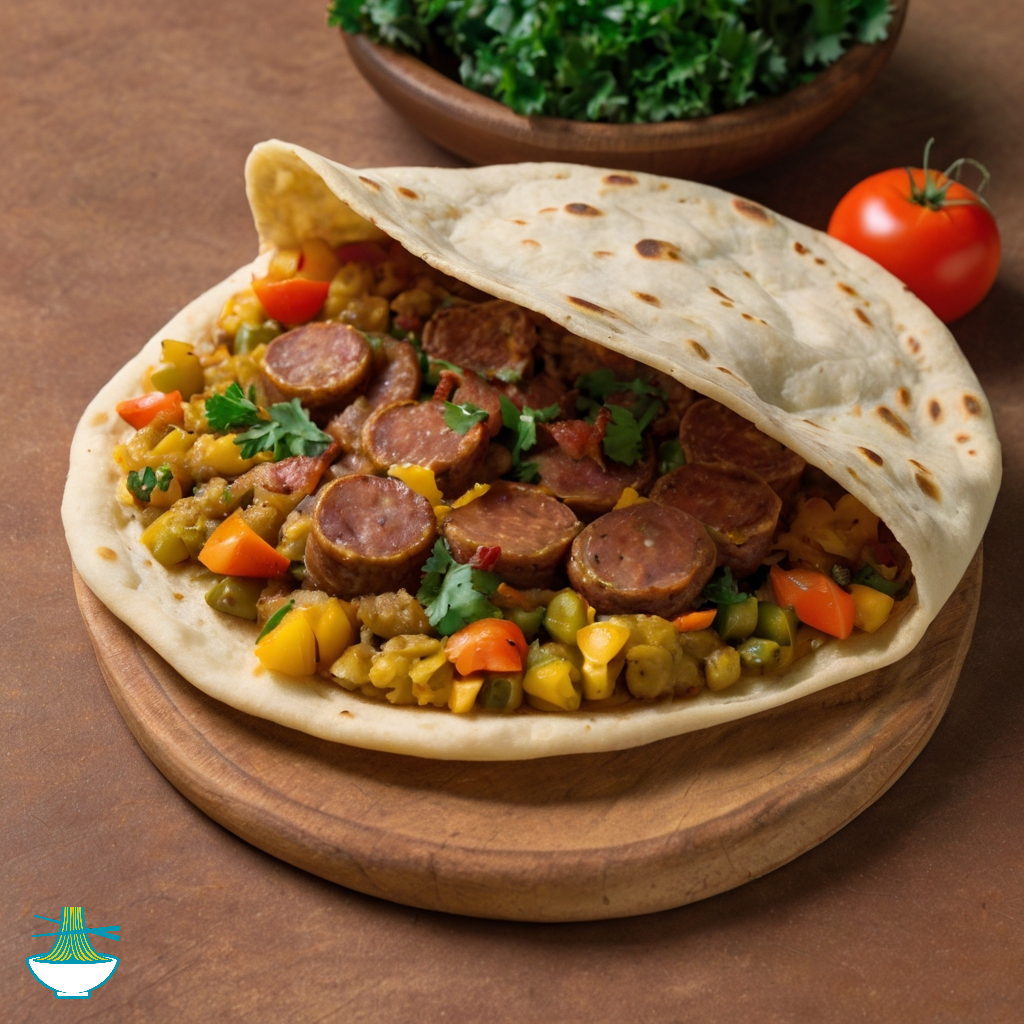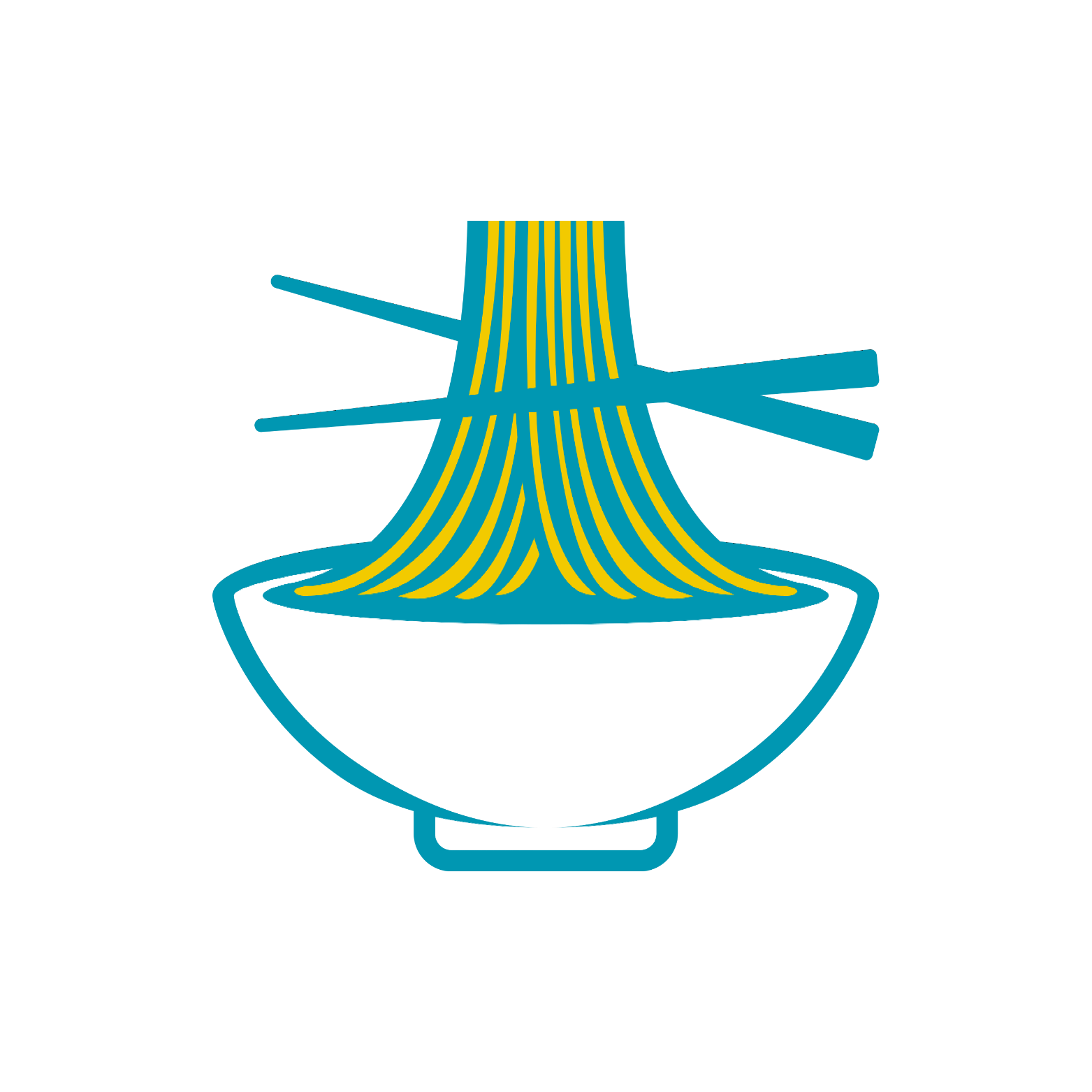Roleza: A savory twist on the traditional rolex, combining chapati with sausage or bacon, eggs, and vegetables. Originating from East Africa, it's a flavorful fusion influenced by diverse culinary traditions.
Ingredients:
- 2 large eggs
- 2 sausages or strips of bacon
- 1 medium-sized chapati (you can make your own or buy pre-made)
- 1/4 cup chopped vegetables (such as bell peppers, onions, tomatoes)
- Salt and pepper to taste
- Cooking oil or butter for frying
Instructions:
1. Heat a skillet or frying pan over medium heat.
2. If you're using sausages, cook them in the skillet until they're browned and cooked through. If you're using bacon, cook it until it's crispy. Remove the cooked sausages or bacon from the skillet and set them aside.
3. In the same skillet, add a little oil or butter if needed. Saute the chopped vegetables until they're tender, about 3-4 minutes.
4. While the vegetables are cooking, crack the eggs into a bowl and whisk them together with a pinch of salt and pepper.
5. Push the cooked vegetables to one side of the skillet and pour the beaten eggs into the empty side. Let them cook undisturbed for a few seconds until they start to set around the edges.
6. Use a spatula to gently scramble the eggs, incorporating the vegetables as you go. Continue cooking until the eggs are fully cooked but still moist. Remove from heat.
7. Warm up the chapati in the skillet or on a separate pan.
8. Once the chapati is warm, place it on a plate. Lay the cooked sausages or bacon on top of the chapati, followed by the scrambled eggs and vegetables.
9. Carefully roll up the chapati, enclosing the filling inside, to create your Roleza.
10. Serve immediately and enjoy your delicious Roleza!
This recipe provides a basic guide for making Roleza. Feel free to customize it with your favorite ingredients and seasonings!
Nutrition Value:
1. 2 large eggs:
- Calories: Approximately 140 calories
- Carbohydrates: 1 gram
- Protein: 12 grams
- Fat: 10 grams
- Sodium: 140 milligrams
- Cholesterol: 370 milligrams
- Vitamins: Rich in vitamins A, B2, B6, B12, D, and E
- Minerals: Contains iron, calcium, potassium, and phosphorus
- Nutritional Benefits: Eggs are an excellent source of high-quality protein, vitamins, and minerals. They provide essential amino acids, which are the building blocks of protein, and various nutrients necessary for overall health, including brain function, muscle strength, and eye health.
2. 2 sausages or strips of bacon:
- Calories: Approximately 150-200 calories (depending on the type and size)
- Carbohydrates: 1-2 grams
- Protein: 6-8 grams
- Fat: 12-15 grams
- Sodium: 400-600 milligrams
- Cholesterol: 30-40 milligrams
- Vitamins: May contain small amounts of vitamins B3, B6, and B12
- Minerals: Contains trace amounts of iron and potassium
- Nutritional Benefits: Sausages and bacon are high in protein and fat, but they can also be high in sodium and saturated fats, which may increase the risk of heart disease if consumed in excess. However, they provide essential nutrients like protein and some vitamins and minerals.
3. 1 medium-sized chapati:
- Calories: Approximately 70-100 calories (depending on size and ingredients)
- Carbohydrates: 15-20 grams
- Protein: 2-3 grams
- Fat: 1-3 grams
- Sodium: 50-100 milligrams
- Cholesterol: 0 milligrams
- Vitamins: Contains small amounts of vitamins B1, B2, B3, and E
- Minerals: Contains iron, magnesium, and phosphorus
- Nutritional Benefits: Chapatis are a good source of carbohydrates for energy and provide some fiber, vitamins, and minerals. They are low in cholesterol and fat, making them a healthier option compared to some other bread varieties.
4. 1/4 cup chopped vegetables (such as bell peppers, onions, tomatoes):
- Calories: Approximately 10-20 calories
- Carbohydrates: 2-4 grams
- Protein: 0-1 gram
- Fat: 0 grams
- Sodium: 0-5 milligrams
- Cholesterol: 0 milligrams
- Vitamins: High in vitamins A, C, and K
- Minerals: Contains potassium, magnesium, and folate
- Nutritional Benefits: Vegetables are rich in essential vitamins, minerals, and antioxidants. They provide fiber for digestive health, vitamins for immune support, and various other nutrients that contribute to overall well-being.
5. Salt and pepper to taste:
- Negligible calories, carbohydrates, protein, and fat
- Sodium: Depends on the amount added
- Cholesterol: 0 milligrams
- Vitamins and minerals: None significant
- Nutritional Benefits: Salt adds flavor to the dish, but excessive intake can contribute to high blood pressure. Pepper adds flavor and may have some antioxidant properties.
6. Cooking oil or butter for frying:
- Calories: Approximately 120-130 calories per tablespoon (depending on the type)
- Fat: 14 grams
- Sodium: 0-2 milligrams
- Cholesterol: 30-40 milligrams
- Vitamins: May contain small amounts of vitamins E and K (in butter)
- Minerals: None significant
- Nutritional Benefits: Cooking oil and butter add flavor and richness to the dish. They provide essential fatty acids and fat-soluble vitamins, but they are high in calories and saturated fats, so they should be used in moderation.
These nutritional values are approximate and can vary based on factors such as serving size, cooking methods, and specific ingredients used.


Comments